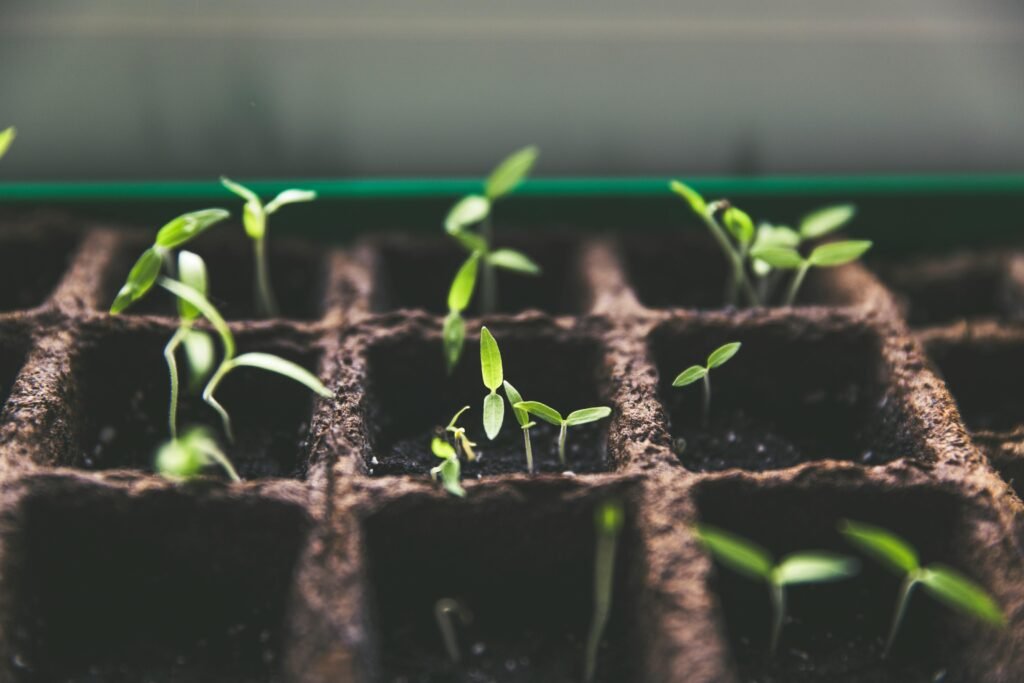Plant What You’ll Actually Eat

Back in the day, people grew the vegetables and herbs they knew they’d cook with. It might sound simple, but the first tip to maximizing garden efficiency is sticking with plants you genuinely like to eat. Love tomatoes in salads and sauces? Grow them. Obsessed with herbs like basil or parsley? Dedicate a little patch. It’s easier to stay motivated, and your kitchen stays stocked with food you’re excited to use.
Go for Companion Planting
Farmers of the past relied on companion planting, a strategy that pairs plants together to boost growth and reduce pests. For example, plant tomatoes with basil to keep insects at bay or pair beans with corn for better yields and stronger growth. These natural pairings not only save space but also reduce the need for chemical fertilizers and pesticides.
Start a Seed-Saving Tradition
Seed-saving was once common practice, letting gardeners save money and encourage plants adapted to local conditions. When you save seeds from your healthiest plants, you get crops that are better suited to your garden’s unique soil and climate year after year. It’s a simple way to build a sustainable garden.
Use Mulch as a Protective Barrier
Our gardening ancestors used mulch like straw, leaves, or grass clippings to keep their soil moist, reduce weeds, and protect against temperature swings. Mulch also adds organic matter as it breaks down, enriching the soil naturally. Plus, it’s budget-friendly, especially if you use materials from your own yard!
Set Up Rain Barrels for Free Water
Harvesting rainwater was a traditional way to cut down on water costs and make use of what nature provides. Install a rain barrel or any container to catch rain from your roof or shed. It’s free, naturally soft water that’s easy on your plants and cuts down on water bills.
Let Your Weeds Work for You
Yes, you read that right—some weeds actually help your garden. Back in the day, people understood the value of weeds like dandelions and clover, which pull up nutrients from deep in the soil. Instead of yanking every weed, leave a few that could benefit your soil’s nutrient balance or attract pollinators.
Make Use of Kitchen Scraps

Kitchen composting has been around for ages, transforming scraps into rich fertilizer. Save vegetable peels, coffee grounds, and eggshells to compost in a bin or pile. Over time, you’ll have a natural, nutrient-dense addition to your soil, reducing your reliance on store-bought fertilizers.
Time Your Planting with the Seasons
Older generations were pros at timing their crops to get the best yields. Try staggering your planting based on the seasons so that you can harvest throughout the year. For example, plant cool-weather crops like lettuce early in spring, then switch to warm-weather veggies like peppers in summer. Seasonal timing maximizes your yield without overwhelming you with all-at-once harvesting.
Create Natural Pest Remedies
Before pesticides, people used ingredients from their kitchens and gardens to ward off pests. Garlic, chili powder, and soapy water make for a simple, effective spray against bugs, while herbs like mint and lavender repel insects naturally. It’s affordable, effective, and safe for the rest of your garden.
Rotate Your Crops for Healthier Soil
Crop rotation is an age-old practice to keep soil fertile and reduce pests. By changing the location of certain crops each year, you prevent soil nutrient depletion and disrupt pest life cycles. Rotating crops can keep your soil richer in nutrients, which means healthier plants and better harvests.
Grow Perennials for Consistent Harvests
Perennials are plants that come back year after year, and they were a staple in traditional gardens. By planting crops like asparagus, rhubarb, and certain herbs, you invest in plants that’ll keep producing without the annual replanting. They require a little initial effort but will reward you with years of fresh produce.
Embrace Pollinator-Friendly Plants
Our ancestors understood that without bees, butterflies, and other pollinators, their yields would suffer. Add flowering plants like marigolds, sunflowers, or lavender to your garden to attract pollinators. These beneficial bugs can boost the productivity of your food plants, giving you more to harvest and enjoy.
